Research on Autonomous Retail Vehicles: Lower Costs Accelerate Mass Production with Ever-spreading Retail Scenarios
Autonomous retail vehicles integrate technologies such as 5G, artificial intelligence, big data, mobile Internet and autonomous driving. They can move with the changes in the surrounding traffic autonomously. Users can hail such vehicles directly through APPs, and then they will arrive at the designated location accurately to provide convenient services.
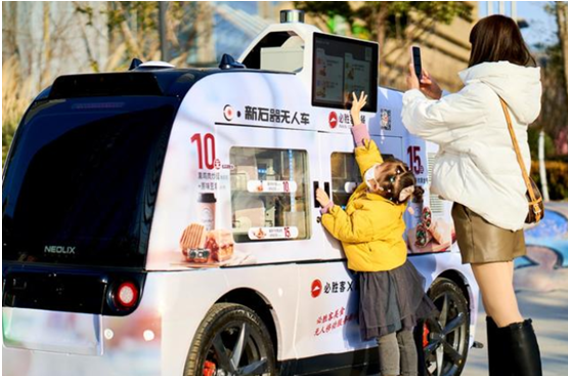
At present, the digital economy has become the key engine of China's economic development. According to information from the Ministry of Industry and Information Technology, China has built 1.615 million 5G base stations so far, serving more than 400 million 5G users. China is a global leader in 5G infrastructure, mobile Internet ecology, and e-commerce. Smartphones have become the preferred terminals of the digital economy, smart cars will become the second-ranking terminals, and autonomous retail vehicles act as not only important terminals connecting e-commerce services and smartphones, but also core intelligent terminals that realize the transition from "people looking for services" to "services looking for people" (or "goods looking for people").
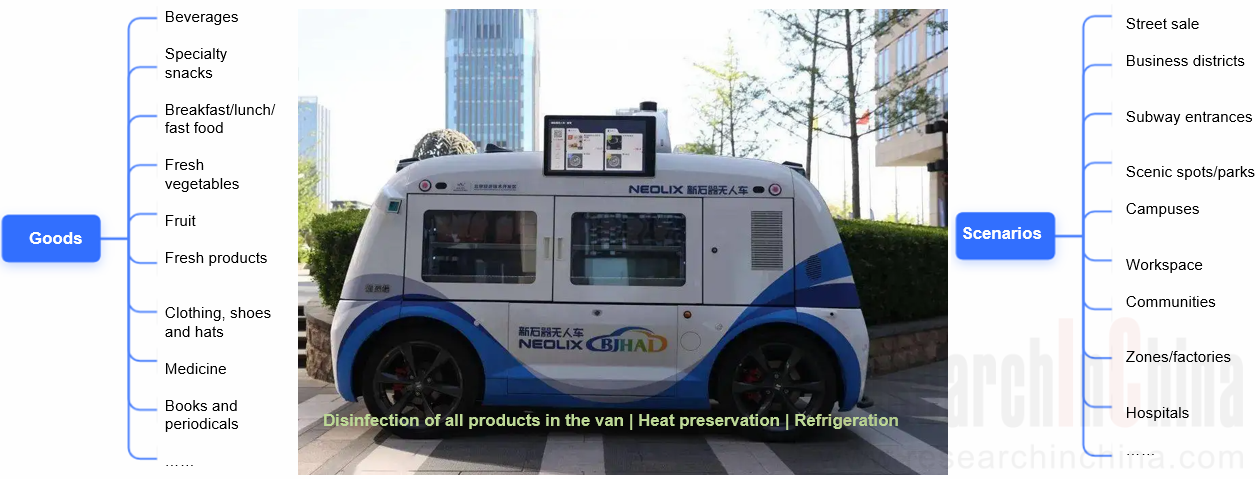
Autonomous retail vehicles are widely used in smart scenic spots, AI parks, commercial streets, zones, squares and other places for selling high-demand products such as beverages, breakfast, fast food, fresh products, and even shoes. Mobile new retail lets goods look for people. Users can stop autonomous vending vehicles by scanning QR codes, beckoning, and touching displays, and pay for what they choose by QR code scanning. This mode is time-saving, convenient and easy. For merchants, presenting products in front of customers in crowded areas (subway entrances, business districts, zones, etc.) during rush hours and lunch break when the demand hits the maximum can significantly increase the transaction volume. The service radius of merchants has been expanded from 1-2 kilometers to 5 kilometers.
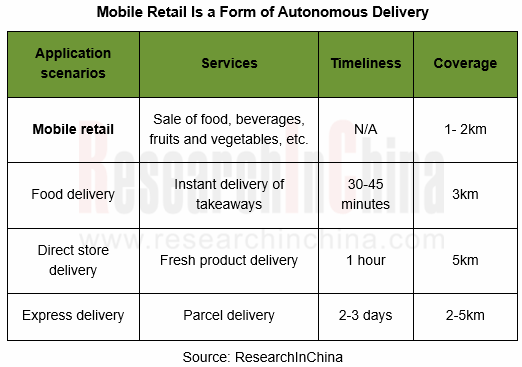
1. The policies for low-speed autonomous vehicles have been gradually improved
As low-speed autonomous vehicles, autonomous retail vehicles are used in cargo-carrying scenarios that are easier to handle. On May 25, 2021, Beijing High-level Autonomous Driving Demonstration Zone released the "Implementation Rules for the Management of Autonomous Delivery Vehicles", and issued vehicle numbers for autonomous delivery vehicles of JD.com, Meituan and Neolix. Since then, L4 autonomous driving technology has been verified by large-scale testing and on-road operation, which has promoted the vigorous development of China’s autonomous delivery industry.
Neolix launched nearly 1,000 autonomous vehicles in 2021, and plans to roll out another 2,000 autonomous delivery vehicles in 2022. Meituan plans to deploy 1,000 autonomous delivery vehicles in Shunyi District within three years, and put a total of 10,000 such vehicles into operation nationwide to achieve multi-city, multi-scenario and all-weather coverage.
Up to now, Beijing High-level Autonomous Driving Demonstration Zone has granted a total of 225 test licenses, including 86 body codes for autonomous delivery vehicles. So far, the demonstration zone has started the third phase of the construction project. In the demonstration zone, 332 digital intelligent intersections have been fully covered by the infrastructure within a range of 60 square kilometers. Scenarios such as autonomous retail, autonomous police patrols, and micro-circulation shuttling have approached citizens.
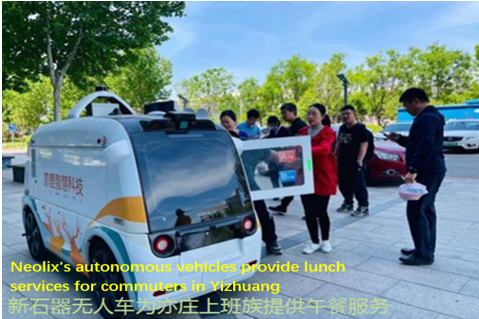
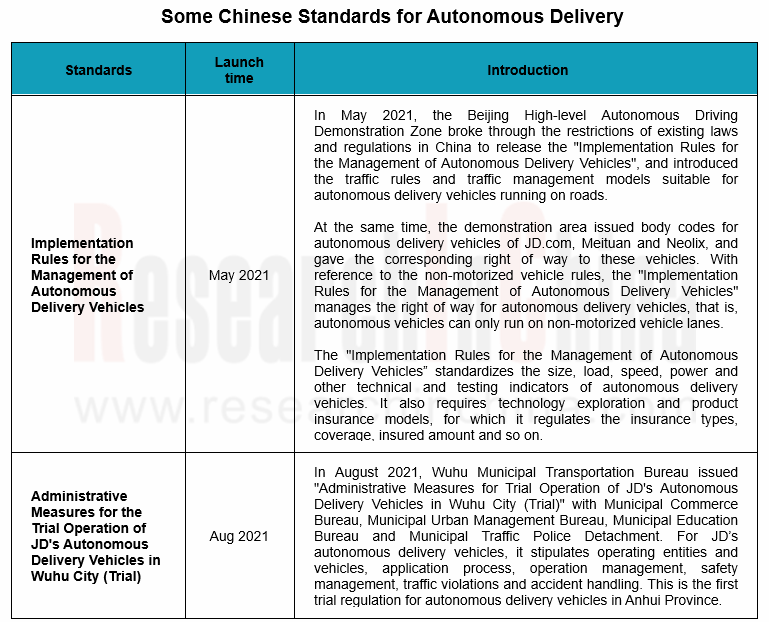
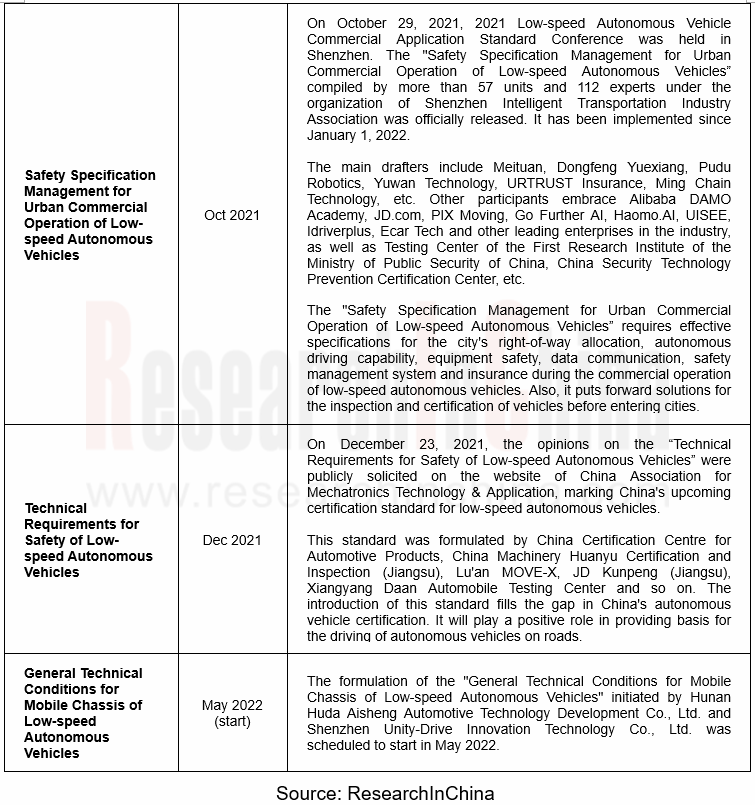
At the beginning of March 2022, Shanghai Municipal Transportation Commission announced that a total of 13 solutions for Shanghai Intelligent Connected Vehicle Demonstration Application Innovation Project had been confirmed after companies' voluntary application, on-site evaluation and solution review according to the "Implementation Plan for the Expansion of Demonstration Application Scenarios of Intelligent Connected Vehicles in Shanghai (2021-2023)". Among them, 2 solutions were involved with "smart retail", requiring "no less than 20 smart retail vehicles” in operation.
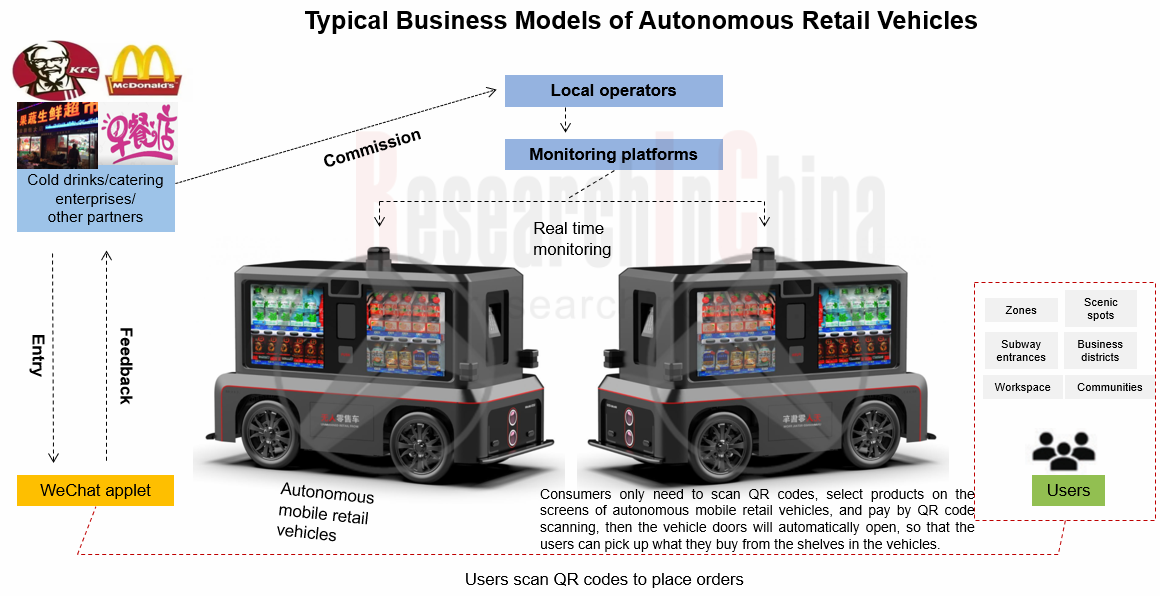
2. The costs of low-speed autonomous delivery vehicles are gradually sinking, promoting mass production of such vehicles for more scenarios
Depending on models, sensor solutions, etc., an autonomous delivery vehicle generally costs RMB200,000 ~ 500,000, let alone other expenses incurred by insurance, vehicle operation and maintenance, on-site safe operation and maintenance, remote monitoring, labor, cloud platform services, etc. China-based Haomo.AI has launched its first autonomous delivery vehicle, the Little Magic Camel, priced at RMB130,000. It is equipped with 3 mechanical LiDAR sensors worth about RMB40,000, radar, cameras and a computing platform. The total cost is nearly RMB100,000. Among the three basic systems of perception, decision-making and actuation, the computing platform plays a key role in the safe operation of autonomous retail vehicles.
With the gradual penetration of autonomous retail vehicles from fixed scenarios to more complex public road scenarios, extremely high requirements are placed on low-latency processing and multi-sensor information fusion of computing platforms. In the field of computing platforms, typical automotive chip enterprises include Horizon Robotics, Huawei, Idriverplus, Haomo.AI, Neolix, WeDrive.Al, Go Further AI, etc. The current mainstream computing platform is the NVIDIA Jetson AGX Xavier platform which is estimated at around RMB10,000 according to the supplier's price that is expected to further drop in the future.
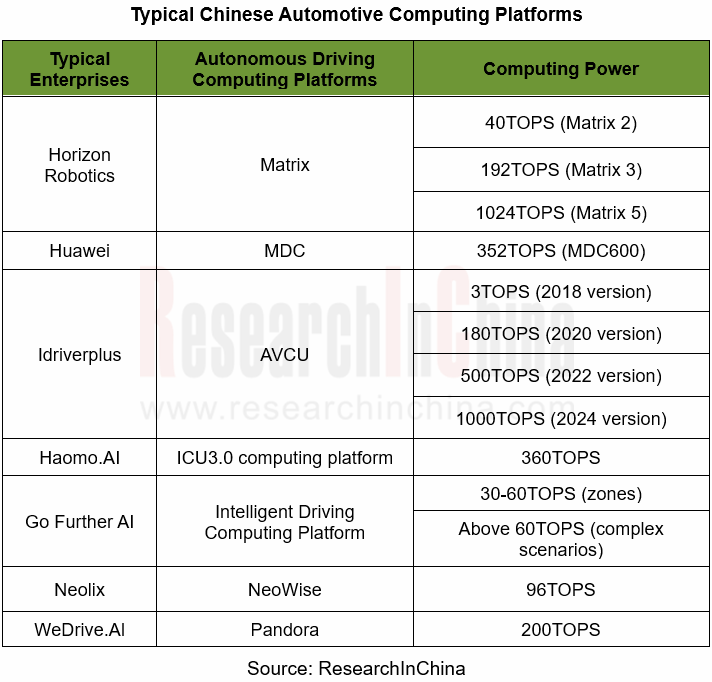
In addition, LiDAR whose cost is on a downward trend plays an extremely critical role in the perception system. Most of the current autonomous delivery vehicles use 16-channel LiDAR. Under the stimulation of demand, Chinese LiDAR vendors, such as LeiShen Intelligent System, RoboSense, HESAI, Livox, Huawei, etc., have sprung up, and they can basically meet the demand of autonomous delivery vehicles.
Chassis-by-wire is one of three core components of an autonomous delivery vehicle. In China, main chassis-by-wire players include PIX, Teemo, UISEE, Skywilling, Neolix, and Haomo.AI. For example, PIX Moving offers chassis-by-wire at the price of RMB80,000 ~ 100,000. With the continuous deployment of autonomous delivery vehicles and autonomous retail vehicles in China, large-scale mass production will further drag down the price of chassis-by-wire.
?The chassis of autonomous vehicles is changeable, and a specific service function can be fixed horizontally like autonomous retail vehicles, autonomous media vehicles, etc.
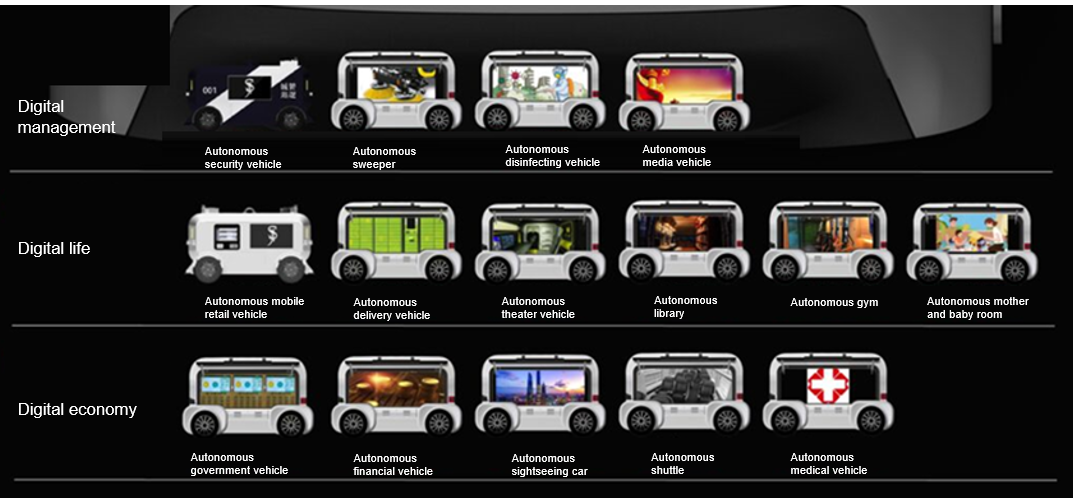
?UISEE’s autonomous vehicles: Different services can be performed at different times of the day with a higher operational efficiency.
UISEE, which is committed to all-scenario strategy, continues to expand application scenarios of its products. On September 25, 2021, it officially released UiBox (an L4 autonomous driving solution for urban services) and UiBox (an autonomous delivery vehicle) to further promote "commercial application of AI drivers" in all scenarios. UiBox can offer different services at different times to improve operational efficiency.
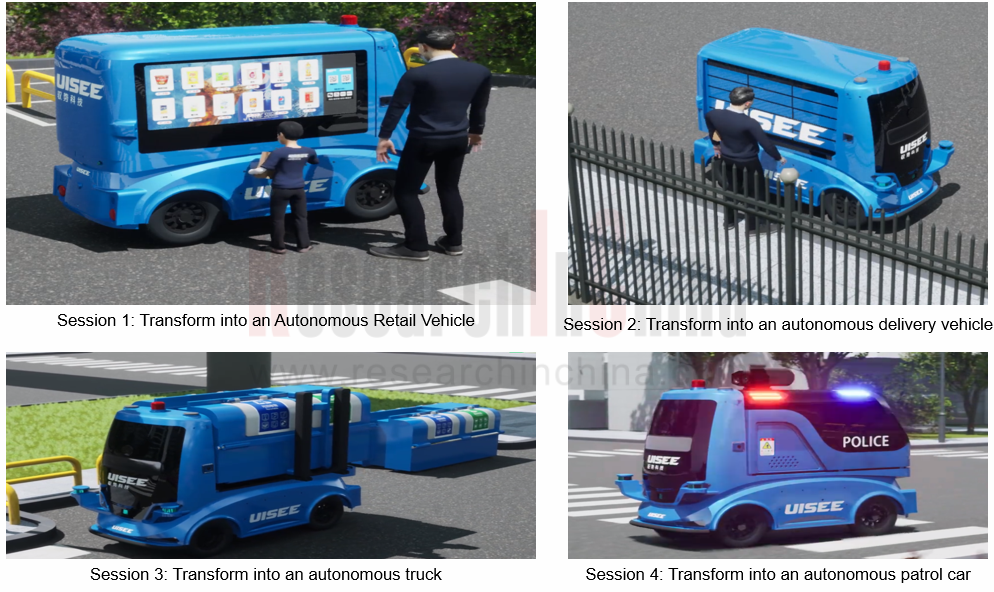
3. The application scenarios of autonomous retail vehicles have spread from semi-enclosed zones to open roads and then to large communities
In 2021, Jushi Technology deployed an autonomous fleet in Zhangjiang Artificial Intelligence Island in Shanghai where employees can buy a variety of food, office supplies, and daily necessities from autonomous retail vehicles. Autonomous delivery vehicles can provide food delivery services such as pizza delivery to restaurants on the artificial intelligence island. After employees place orders through their mobile phones, autonomous vehicles will automatically deliver the meals prepared by restaurants to employees who only need pick up the meals according to the notification on their mobile phones. In addition, the supporting monitoring platform can surveil the operation of autonomous vehicles around the clock to ensure safety.

On June 1, 2022, Shanghai WeDrive.Al officially introduced autonomous retail vehicles to Nanfeng Future Community, Shangyu, Shaoxing, Zhejiang to provide autonomous sales services for the community. Nanfeng Future Community consists of City Star, Liangjiang Home and Community Center Complex, which are home to more than 40,000 residents and more than 12,700 families.
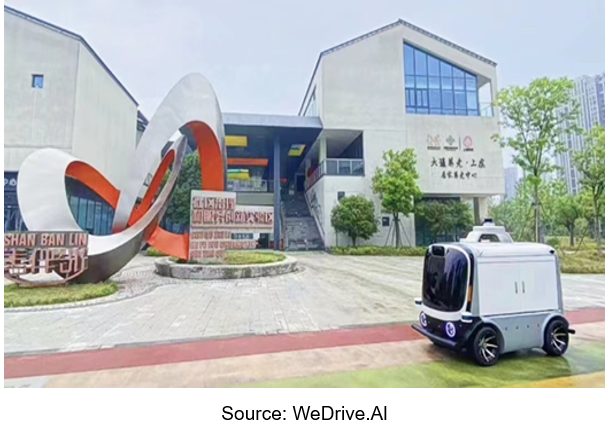
On April 22, 2022, Neolix’s autonomous vehicles were also welcomed into the large community of Shanghai Lijing in Pudong District, Shanghai. Autonomous retail companies are covering more application scenarios.
4. OEMs use their advantages in technology and manufacturing to explore new businesses
On April 30, 2021, In-driving Tech was invited to participate in the Science Night of Han Street in Wuhan. The interactive area displayed the Sharing-Box, a high-tech autonomous smart car developed by In-driving Tech and Dongfeng Motor.
Sharing Box is an autonomous intelligent point-to-point transportation platform launched by Dongfeng Motor. It is constructed by integrating TITAN (an autonomous driving domain controller of In-driving Tech) and Athena Software to realize L4 autonomous driving based on HD maps in specific scenarios.
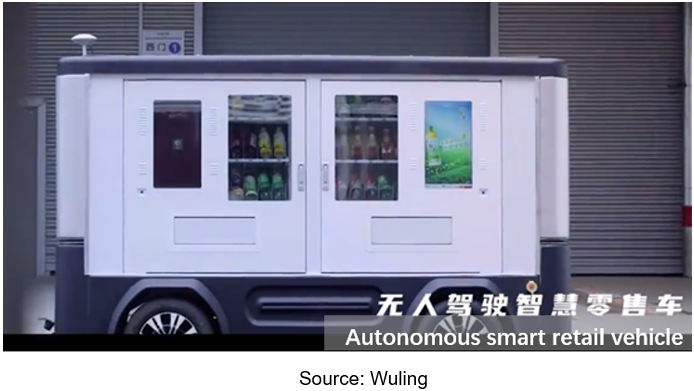
In addition to Dongfeng Motor, Wuling has also explored new businesses with its own technology and manufacturing advantages, and launched "Xiaoling" driverless smart retail vehicle, which has been practically applied.
In Baoding, Haomo.AI, a company backed up by Great Wall Motor, has built the world's first flexible manufacturing base for L4 low-speed autonomous vehicles. It produces a variety of models (including autonomous retail vehicles). After the latest upgrade, the design capacity of the production line can reach 10,000 vehicles per year.
5. With the support of capital, major players aggressively enhance resilience, use closed data loop to continuously improve technology and ensure safe operation
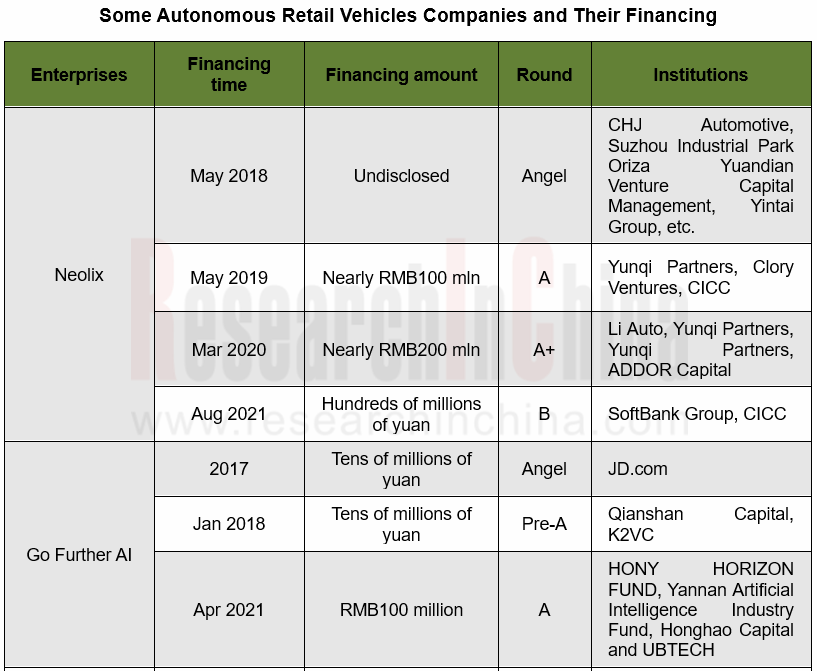

During the R&D process of Little Donkey, which can run more than 100 kilometers on a charge of 4 kWh, Alibaba DAMO Academy has built its own autonomous driving cloud platform from the very beginning, which uploads massive data (scenario databases, autonomous vehicle data, data from data collection vehicles) to Alibaba Cloud. Carrying out data management, simulation testing and algorithm model training on the cloud has greatly improved the R&D efficiency of autonomous driving algorithms. Based on this autonomous driving cloud platform, Alibaba DAMO Academy has launched the world's first "hybrid simulation test platform" for autonomous driving. The platform uses a combination of virtual and reality simulation technologies, introduces real road test scenarios and cloud trainers. It takes only 30 seconds to simulate an extreme scenario, and the system’s daily virtual test mileage can exceed 8 million kilometers, greatly improving the training efficiency of autonomous driving AI models.
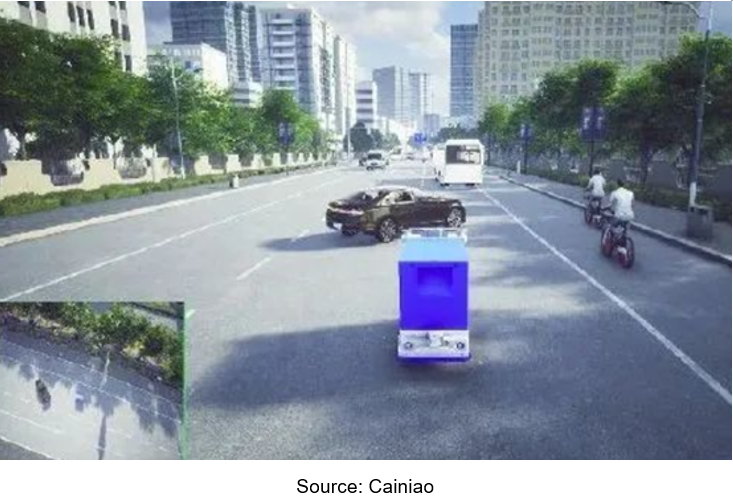
From its debut in September 2020 to March 31, 2022, Little Donkey delivered more than 10 million logistics orders.
According to Jie Jinghua, a partner of Neolix, the current commercial scenarios of Neolix’s autonomous vehicles include both open roads and closed zones such as campuses. A vehicle can obtain 100T data per day, and it actively captures about 20G/day of valuable data (including the original point cloud of LiDAR, images, intermediate results, logs and so on). The Ocean data system completes the storage, cleaning, labeling and model training of these data before finally forming a closed data loop.
When autonomous vehicles become more sophisticated, the ultimate challenge no longer lies in underlying architectures or technical problems, but fragmented scenarios, special extreme situations and human behaviors that can never be predicted instead which account for 5%.
Body (Zone) Domain Controller and Driver IC Industry Research Report,2023
Body (zone) domain controller research: evolution of body electronic and electrical architecture driven by MOSFET and HSD.
The mode of control over body electronic functions is changing with the evol...
China Automotive Fragrance and Air Purification Systems Research Report, 2023
Automotive fragrance and air purification systems: together to create a comfortable and healthy cockpitTechnology trend: intelligence of fragrance system and integration of air purification system
In...
Global and China Solid State Battery Industry Report, 2023
Solid state battery research: semi-solid state battery has come out, is all-solid state battery still far away?In recent years, the new energy vehicle market has been booming, and the penetration of n...
Global and China Passenger Car T-Box Market Report, 2023
T-Box industry research: the market will be worth RMB10 billion and the integration trend is increasingly clear.
ResearchInChina released "Global and China Passenger Car T-Box Market Report, 2023", w...
Analysis Report on Auto Shanghai 2023
Analysis on 75 Trends at Auto Shanghai 2023: Unprecedented Prosperity of Intelligent Cockpits and Intelligent Driving Ecology
After analyzing the intelligent innovation trends at the Auto Shanghai 20...
Chinese Emerging Carmakers’ Telematics System and Entertainment Ecosystem Research Report, 2022-2023
Telematics service research (III): emerging carmakers work on UI design, interaction, and entertainment ecosystem to improve user cockpit experience.
ResearchInChina released Chinese Emerging Carmake...
China Passenger Car Cockpit-Parking Industry Report, 2023
Cockpit-parking integration research: cockpit-parking vs. driving-parking, which one is the optimal solution for cockpit-driving integration?Cockpit-parking vs. driving-parking, which one is the optim...
Automotive Sensor Chip Industry Report, 2023
Sensor chip industry research: driven by the "more weight on perception" route, sensor chips are entering a new stage of rapid iterative evolution.
At the Auto Shanghai 2023, "more weight on percepti...
Automotive Electronics OEM/ODM/EMS Industry Report, 2023
Automotive electronics OEM/ODM/EMS research: amid the disruption in the division of labor mode in the supply chain, which auto parts will be covered by OEM/ODM/EMS mode? Consumer electronic manu...
China Automotive Smart Glass Research Report, 2023
Smart glass research: the automotive smart dimming canopy market valued at RMB127 million in 2022 has a promising future.Smart dimming glass is a new type of special optoelectronic glass formed by com...
Automotive Ultrasonic Radar and OEM Parking Roadmap Development Research Report, 2023
Automotive Ultrasonic Radar Research: as a single vehicle is expected to carry 7 units in 2025, ultrasonic radars will evolve to the second generation.
As a single vehicle is expec...
Autonomous Driving SoC Research Report, 2023
Research on autonomous driving SoC: driving-parking integration boosts the industry, and computing in memory (CIM) and chiplet bring technological disruption.
“Autonomous Driving SoC Research ...
China ADAS Redundant System Strategy Research Report, 2023
Redundant System Research: The Last Line of Safety for Intelligent VehiclesRedundant design refers to a technology adding more than one set of functional channels, components or parts that enable the ...
Intelligent Steering Key Components Report, 2023
Research on intelligent steering key components: four development trends of intelligent steering
The automotive chassis consists of four major systems: transmission system, steering system, driving ...
Automotive Digital Instrument Cluster Operating System Report, 2023
Digital Instrument Cluster Operating System Report: QNX commanded 71% of the Chinese intelligent vehicle cluster operating system market.
Amid the trend for the integration of digital cluster and cen...
800V High Voltage Platform Research Report, 2023
How to realize the commercialization of 800V will play a crucial part in the strategy of OEMs.
As new energy vehicles and battery technology boom, charging and battery swapping in the new energy vehi...
Automotive Intelligent Cockpit Platform Research Report, 2023
Intelligent cockpit platform research: the boundaries between vehicles and PCs are blurring, and there are several feasible paths for cockpit platforms.
Automotive Intelligent Cockpit Platform Resea...
Global and China Automotive Wireless Communication Module Industry Report,2023
Vehicle communication module research: 5G R16+C-V2X module, smart SiP module and other new products spring up.
In 2022, 4G modules swept 84.3% of the vehicle communication module market....